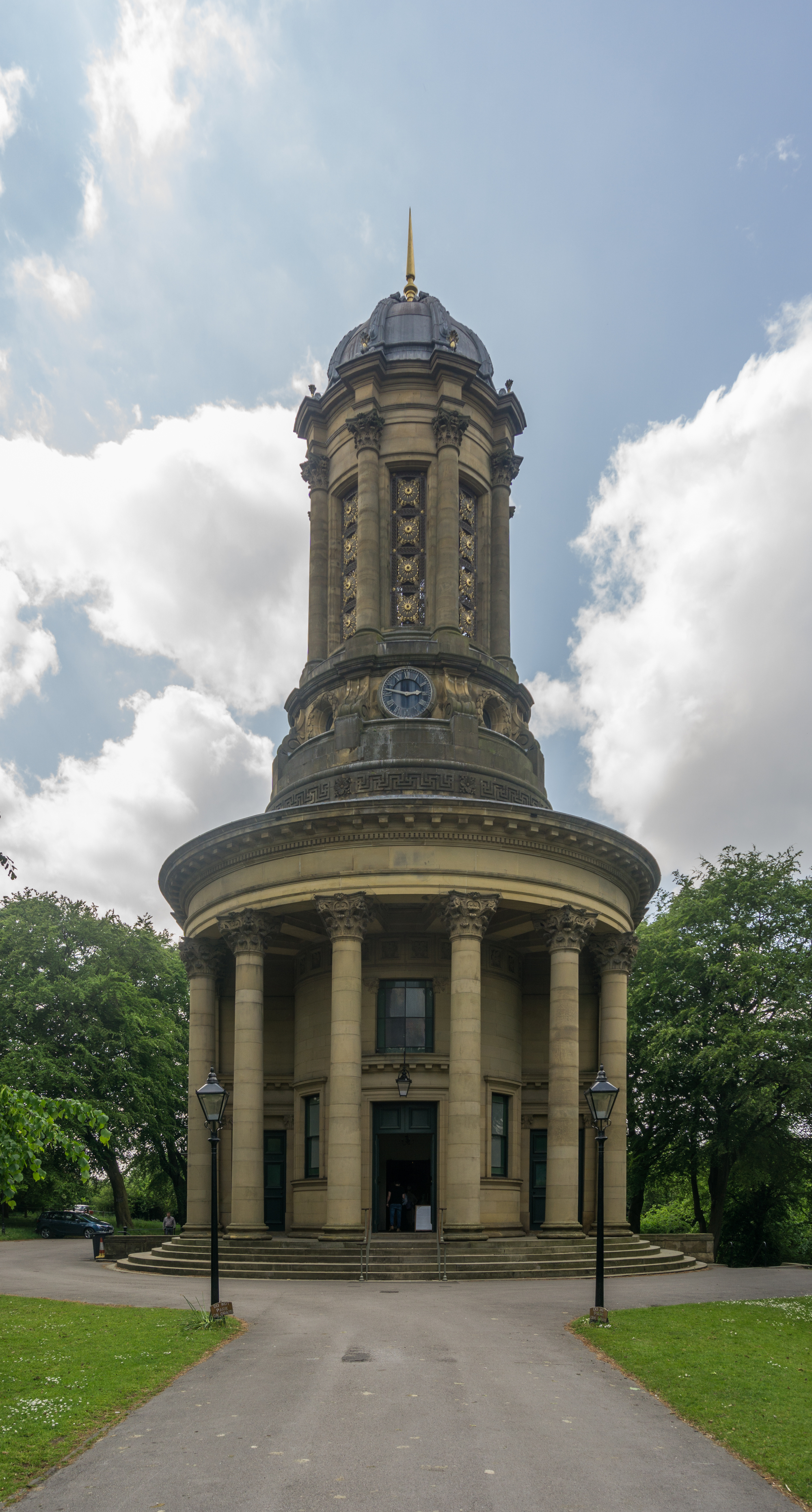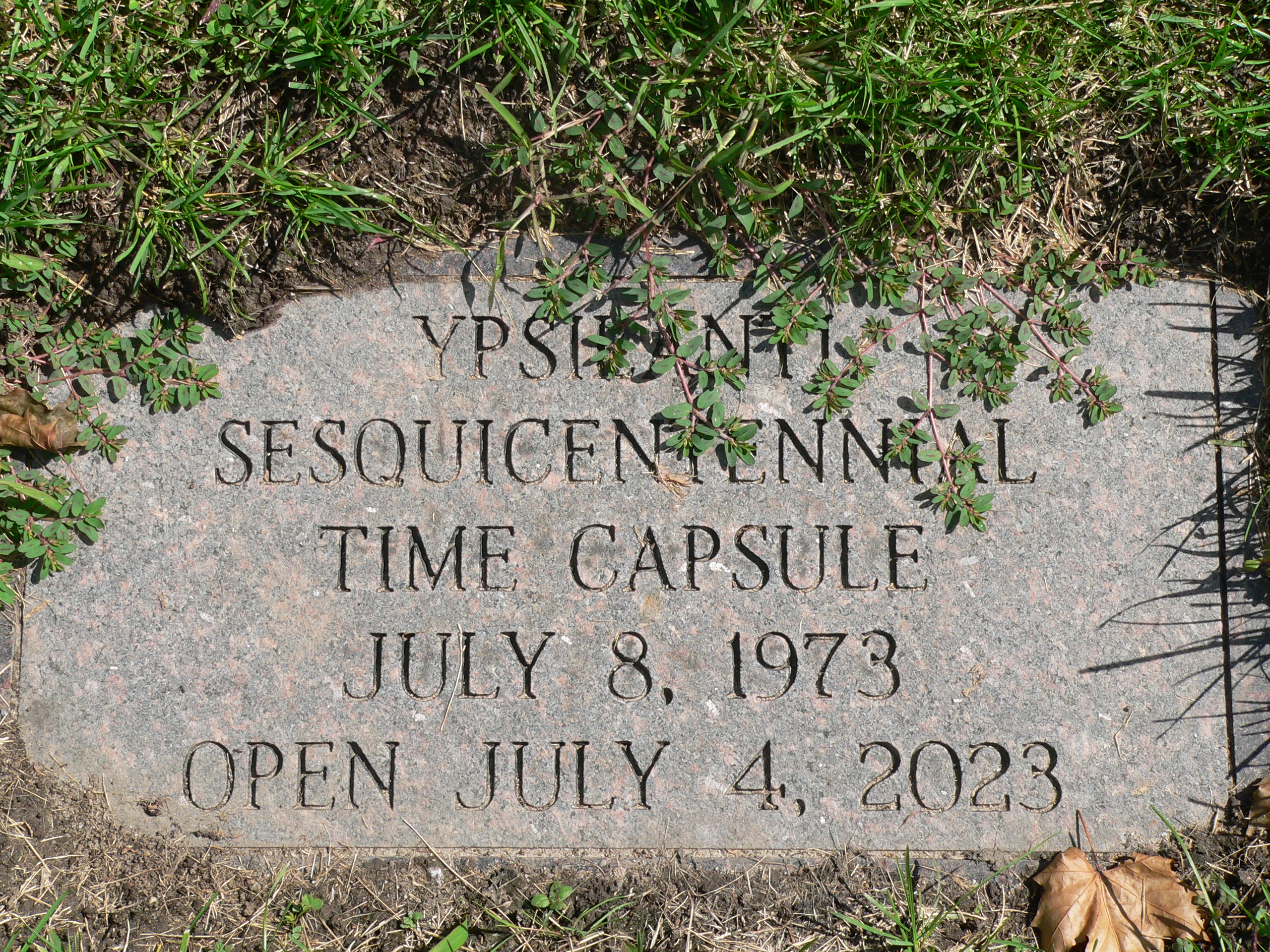|
Headingley Hill Congregational Church
Headingley Hill Congregational Church is a redundant Unitarian church at the corner of Headingley Lane and Cumberland Road, in the Headingley area of Leeds, West Yorkshire, England. The church, which is a Grade II listed building, was designed in the Gothic Revival style by Cuthbert Brodrick and completed in 1866. It was the only church to have been designed by Brodrick, who is noted for Leeds Town Hall and the Corn Exchange. Its congregation moved out in 1978 to merge with St Columba Presbyterian Church and form Headingley St Columba URC with a new building in the centre of Headingley. After this, Headingley Hill Congregational Church was converted to offices. It was returned to religious use in 1996 and renamed the Ashwood Centre, when the independent Pentecostal City Church bought the building and relocated there from the city centre. Due to falling congregations, this closed and it has been vacant since at least 2014, when it was offered for sale. Planning consent fo ... [...More Info...] [...Related Items...] OR: [Wikipedia] [Google] [Baidu] |
United Reformed Church
The United Reformed Church (URC) is a Protestant Christian church in the United Kingdom. As of 2022 it has approximately 40,000 members in 1,284 congregations with 334 stipendiary ministers. Origins and history The United Reformed Church resulted from the 1972 union of the Presbyterian Church of England and the Congregational Church in England and Wales. In introducing the United Reformed Church Bill in the House of Commons on 21 June 1972, Alexander Lyon called it "one of the most historic measures in the history of the Christian churches in this country". About a quarter of English Congregational churches chose not to join the new denomination; in England, there are three main groups of continuing Congregationalists: the Congregational Federation, the Evangelical Fellowship of Congregational Churches and the Fellowship of Independent Evangelical Churches. The URC subsequently united with the Re-formed Association of Churches of Christ in 1981 and the Congregational Union of S ... [...More Info...] [...Related Items...] OR: [Wikipedia] [Google] [Baidu] |
West Yorkshire Joint Services
West Yorkshire Joint Services (WYJS) provides a range of public services to the five districts of West Yorkshire, England (Bradford, Calderdale, Kirklees, Leeds and Wakefield). It is jointly funded by the five district councils, pro rata to their population, and is run by a committee of equal numbers of councillors from the five councils. It "brings together a number of key services which the five district councils of West Yorkshire recognise can be more effectively delivered on a county-wide basis". When West Yorkshire Metropolitan County Council was abolished in 1986, a "Joint Committee Arrangement" was established, to continue to provide archaeology, archives and trading standards services for the five successor district councils. In 1997 the Joint Services were created, to avoid duplication of resources across these services; it is based near Morley, Leeds. Joint Services comprises: * West Yorkshire Archaeology Advisory Service * Archaeological Services WYAS, a commercial or ... [...More Info...] [...Related Items...] OR: [Wikipedia] [Google] [Baidu] |
National Heritage List For England
The National Heritage List for England (NHLE) is England's official database of protected heritage assets. It includes details of all English listed buildings, scheduled monuments, register of historic parks and gardens, protected shipwrecks, and registered battlefields. It is maintained by Historic England, a government body, and brings together these different designations as a single resource even though they vary in the type of legal protection afforded to them. Although not designated by Historic England, World Heritage Sites also appear on the NHLE; conservation areas do not appear since they are designated by the relevant local planning authority. The passage of the Ancient Monuments Protection Act 1882 established the first part of what the list is today, by granting protection to 50 prehistoric monuments. Amendments to this act increased the levels of protection and added more monuments to the list. Beginning in 1948, the Town and Country Planning Acts created the fir ... [...More Info...] [...Related Items...] OR: [Wikipedia] [Google] [Baidu] |
Dedication Of Churches
Churches under the authority of a bishop (e.g., Orthodox, Roman Catholic, or Anglican) are usually dedicated by the bishop in a ceremony that used to be called that of consecration, but is now called that of dedication. For the Catholic Church, the rite of dedication is described in the ''Caeremoniale Episcoporum'', chapters IX-X, and in the ''Roman Missals Ritual Masses for the Dedication of a Church and an Altar. In the Church of England, a consecrated church may only be closed for worship after a legal process (a "pastoral scheme"). Consecration Early customs The custom of solemnly dedicating or consecrating buildings as churches or chapels set apart for Christian worship must be almost as old as Christianity itself. When we come to the earlier part of the 4th century allusions to and descriptions of the consecration of churches become plentiful. This service is probably of Jewish origin: the hallowing of the tabernacle and of its furniture and ornaments (Exodus 40); the dedica ... [...More Info...] [...Related Items...] OR: [Wikipedia] [Google] [Baidu] |
Leeds Mercury
The ''Leeds Mercury'' was a newspaper published in Leeds, West Yorkshire, England. It was published from 1718 to 1755 and again from 1767. Initially it consisted of 12 pages and cost three halfpennies. In 1794 it had a circulation of about 3,000 copies, and in 1797 the cost rose to sixpence because of increased stamp duty. It appeared weekly until 1855, then three times a week until 1861 when stamp duty was abolished and it became a daily paper costing one penny. Edward Baines (1774–1848) bought the paper in 1801, and his son Sir Edward Baines (1800–1890) succeeded him as editor and proprietor. In 1923 the ''Leeds Mercury'' was acquired by the Yorkshire Conservative Newspaper Company Limited (now Yorkshire Post Newspapers), publishers of the ''Yorkshire Post'', but it continued to be published as a separate title until 26 November 1939, after which a combined paper was published as the ''Yorkshire Post'' with the ''Mercury'' name kept as a subtitle for some years. The me ... [...More Info...] [...Related Items...] OR: [Wikipedia] [Google] [Baidu] |
Time Capsule
A time capsule is a historic cache of goods or information, usually intended as a deliberate method of communication with future people, and to help future archaeologists, anthropologists, or historians. The preservation of holy relics dates back for millennia, but the practice of preparing and preserving a collection of everyday artifacts and messages to the future appears to be a more recent practice. Time capsules are sometimes created and buried during celebrations such as a world's fair, a cornerstone laying for a building, or at other ceremonies. History Early examples It is widely debated when time capsules were first used, but the concept is fairly simple, and the idea and first use of time capsules could be much older than is currently documented. The term "time capsule" appears to be a relatively recent coinage dating from 1938. Around 1761, some dated artifacts were placed inside the hollow copper grasshopper weathervane, itself dating from 1742, atop historic Fa ... [...More Info...] [...Related Items...] OR: [Wikipedia] [Google] [Baidu] |
Congregational Church
Congregational churches (also Congregationalist churches or Congregationalism) are Protestant churches in the Calvinist tradition practising congregationalist church governance, in which each congregation independently and autonomously runs its own affairs. Congregationalism, as defined by the Pew Research Center, is estimated to represent 0.5 percent of the worldwide Protestant population; though their organizational customs and other ideas influenced significant parts of Protestantism, as well as other Christian congregations. The report defines it very narrowly, encompassing mainly denominations in the United States and the United Kingdom, which can trace their history back to nonconforming Protestants, Puritans, Separatists, Independents, English religious groups coming out of the English Civil War, and other English Dissenters not satisfied with the degree to which the Church of England had been reformed. Congregationalist tradition has a presence in the United States ... [...More Info...] [...Related Items...] OR: [Wikipedia] [Google] [Baidu] |
Leeds Philosophical And Literary Society
Leeds Philosophical and Literary Society is a Learned society in Leeds, West Yorkshire, England. It was founded in 1819, and its museum collection forms the basis of Leeds City Museum, which reopened in September 2008. The printed works and papers of the society are held by Leeds University Library. The Society is a registered charity under English law. Among the early members of the society were John Marshall (President, 1820–26), Benjamin Gott, William Hey (President, 1831–33), and Edward Baines and his son, Sir Edward Baines. Richard Reynolds was an honorary secretary. More recent Presidents include John Le Patourel (1966–68). Foundation Robert Dennis Chantrell won the competition to build the new Hall for the Society in May 1819 in Classical style. The Hall was sited on the corner of Park Row and Bond Street in the Georgian west end of Leeds. The foundation stone was laid by Benjamin Gott on 9 July 1819 and the Hall was opened on 6 April 1821. The Hall ha ... [...More Info...] [...Related Items...] OR: [Wikipedia] [Google] [Baidu] |
Architectural Design Competition
An architectural design competition is a type of design competition in which an organization that intends on constructing a new building invites architects to submit design proposals. The winning design is usually chosen by an independent panel of design professionals and stakeholders (such as government and local representatives). This procedure is often used to generate new ideas for building design, to stimulate public debate, generate publicity for the project, and allow emerging designers the opportunity to gain exposure. Architecture competitions are often used to award commissions for public buildings: in some countries rules for tendering public building contracts stipulate some form of mandatory open architectural competition. [...More Info...] [...Related Items...] OR: [Wikipedia] [Google] [Baidu] |
William Mawson
William Mawson (17 May 1828 – 25 April 1889) was an English architect best known for his work in and around Bradford. Background Mawson was born in Leeds on 17 May 1828 to parents William and Mary Mawson. His father was a prominent paper manufacturer and councilor in Leeds. William Mawson moved from Leeds to Bradford, after he finished his articles in late 1840s. At that time he was aged 21 and in 1849 he became a partner of the older Henry Francis Lockwood. Initially Mawson lived with his eldest brother Henry and his family at 27 Hanover Square, Bradford. Henry Mawson was a bookseller and printer with a business in Kirkgate Bradford. Also living in this house was their sister, Mary Ann Mawson, whose son Francis Mawson Rattenbury was articled to Mawson and who was to become a famous architect in Canada and who was subsequently murdered by his wife and young chauffeur in the famous case of 1935. Mawson died in 1889 and spent the last twenty years of his life living at 3 Cli ... [...More Info...] [...Related Items...] OR: [Wikipedia] [Google] [Baidu] |
Henry Francis Lockwood
Henry Francis Lockwood (18 September 1811, Doncaster – 21 July 1878, Richmond, Surrey) was an influential English architect active in the North of England. Family Lockwood was from a successful Doncaster family. His grandfather, Joseph Lockwood (c1758-1837) was twice mayor of Doncaster and part-owner of the limestone quarries at Levitt Hagg, as was his father, also Joseph (1785-1842), who was also a stonemason and builder. He was the uncle of Sir Frank Lockwood QC (1846–1897), and the great grandfather of the film actress Margaret Lockwood (1916–1990). Another nephew was Louis Lockwood (1864-1907) who was a successful architect in St. Paul, Minnesota. A more distant cousin was Sir Joseph Flawith Lockwood (1904–1991) the Chairman of EMI. Lockwood married his first cousin Emma Dey (1810–1882). Charles Day (boot blacking manufacturer), who made a colossal fortune through the Day and Martin company, was uncle to both of them (their mothers were Day's sisters), and t ... [...More Info...] [...Related Items...] OR: [Wikipedia] [Google] [Baidu] |





.jpg)
